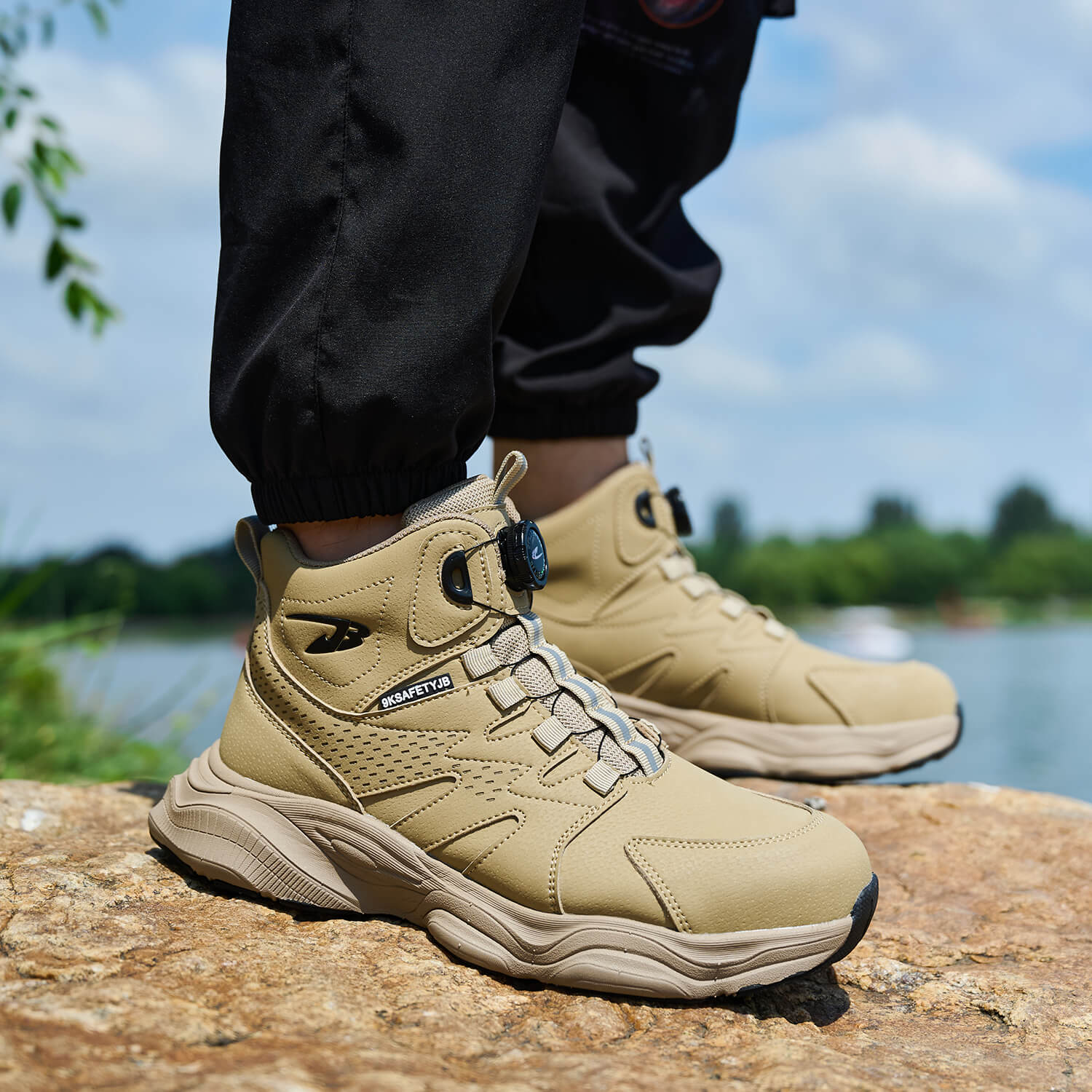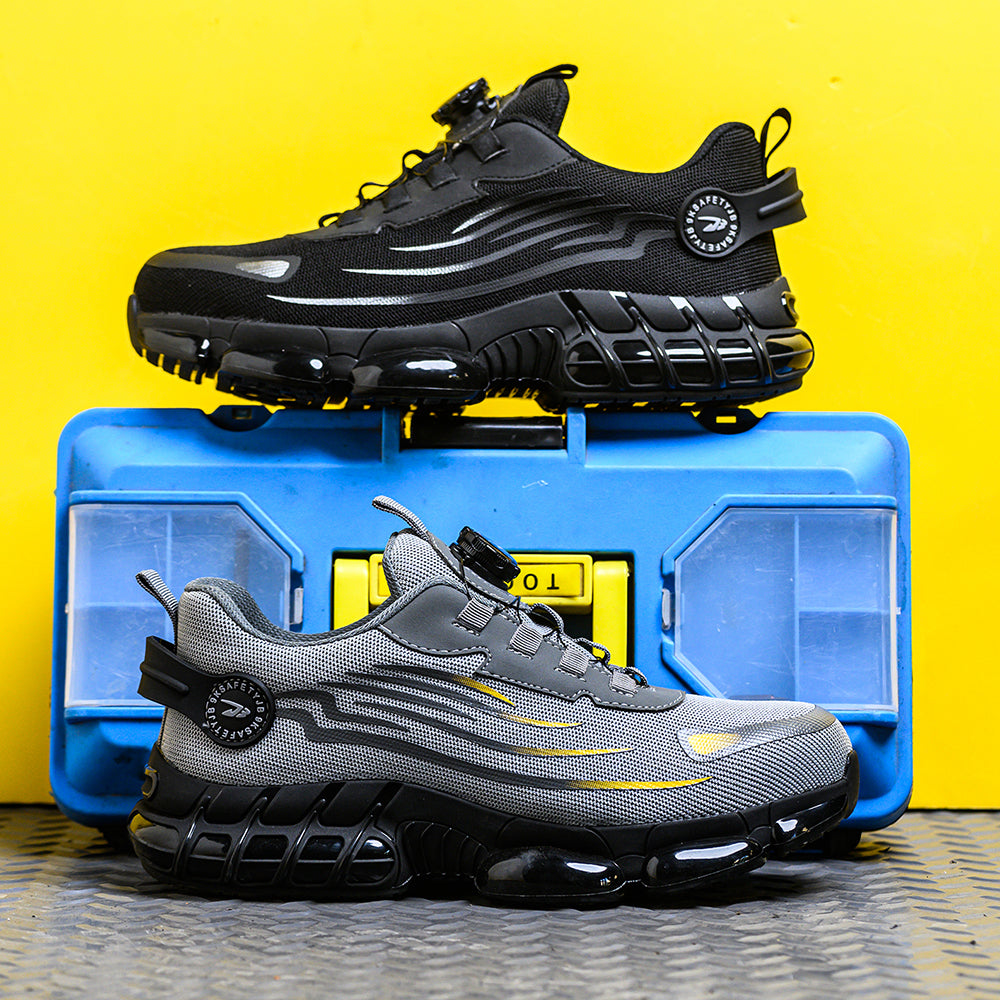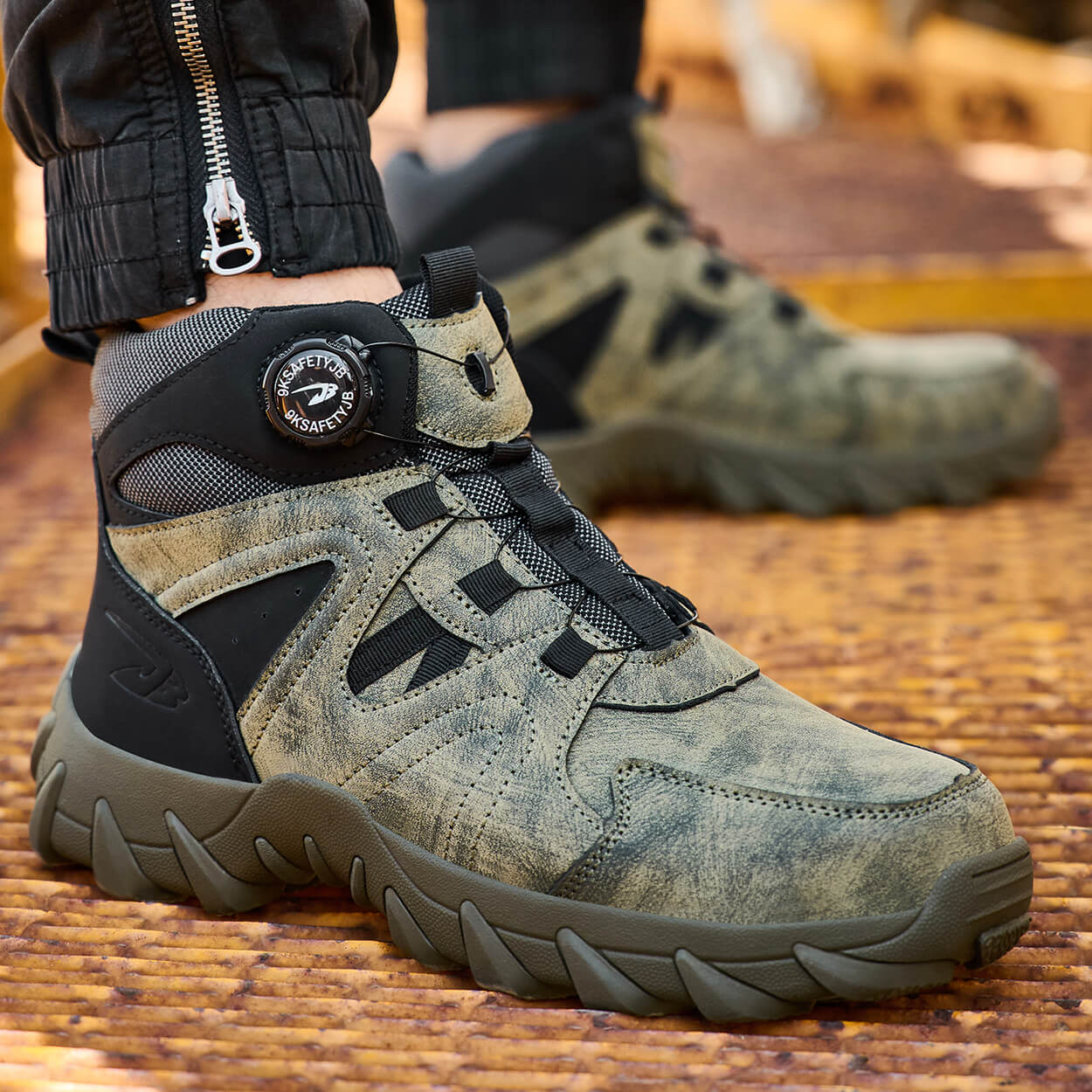Safety shoes are necessary protective equipment in the workplace. The use of safety shoes is required to keep your feet, ankles, and legs safe from injury or harm. However, because it is not the most common piece of equipment that many people see on a daily basis, they are unaware of the functions of safety shoes.
In this article, I'll tell you about some things you probably didn't know about safety shoes, such as the functions they serve and why you need some protection for your feet from potential harm.
What exactly do safety shoes imply?
Safety Shoes are shoes that keep our feet from slipping on hard ground, hot or rough surfaces. They also keep insects and animals away from our feet.Protective footwear is made from a variety of materials, including leather, rubber soles, and wood.
Steel toe safety shoes (also known as steel toe boots) are a type of personal protective equipment (PPE) for workplace foot protection. Its slip-resistant outsole protects the feet from injuries caused by slippery surfaces, heavy falling or rolling objects, sharp piercing edges, pinch points, rotary machinery's rollers/shaft, and other hazards.

The Top Footwear to Prevent Slips and Trips in the Workplace Slip-Resistant Shoes
1.Slip resistant shoes
Slip-resistant shoes are intended to prevent workplace slips and falls by providing superior traction and grip on wet and slippery surfaces. Slip-Resistant Work Shoes have special soles made of a non-slip material that make walking on slippery .
2.Steel toed boots
Steel-toed boots are another option for preventing slips and falls in the workplace. These boots are intended to provide additional foot protection, particularly in hazardous work environments. They include a steel toe cap, which protects your feet from falling objects and crushing injuries.
3.Waterproof Shoes
Working in wet environments increases the risk of slips and falls, so waterproof footwear is essential. Even in the wettest conditions, these shoes will keep your feet dry. They are made of water-resistant materials and have sealed seams to keep water out of the shoe.
Functions of Safety Shoes
Foot injuries can be incapacitating, requiring time away from work or making it difficult to perform a job. In the following ways, wearing safety shoes or boots can help prevent many foot injuries.
1. Guard against falling and flying objects
Falling and flying objects are common hazards when workers transport heavy materials or work in dynamic environments with many people, machines, and vehicles operating at the same time. Steel toe boots, for example, can effectively prevent crushing injuries to the feet.
2. Shield against punctures
Shoes with heavy-duty soles and thick materials surrounding the foot provide the best protection when workers may step on sharp objects or be struck by sharp objects from above. Many sharp objects, for example, could be in someone's path on a construction site. A soft-soled shoe may not provide adequate protection.
3. Protect against cutting hazards
Sharp machinery or machinery with moving parts can pose a cutting hazard. Chainsaws, for example, endanger workers in the logging industry. If a chainsaw comes into contact with someone's foot, the results could be disastrous.These boots are also waterproof or water repellent and provide ankle support.
4. Guard against electrical hazards
Electricity can be dangerous in the workplace.Workers may experience electric shocks or accumulate static electricity, which can result in electric sparks in some environments.
Non-conductive footwear made of leather, rubber, or other non-conductive materials can be worn to reduce the risk of an electrical accident. Anti-static or conductive footwear can be worn in situations where static electricity on the body is a hazard. These options reduce static electricity accumulation on the body, preventing static electric sparks.
5.Prevent slips,trips and falls
Slips, trips, and falls can occur in any workplace and cause numerous accidents each year. Businesses can reduce the risk of these mishaps by implementing housekeeping measures and installing anti-slip floor tape. Proper footwear can also help to protect against slips, trips, and falls.
In slippery environments, shoes with adequate traction can help prevent falls on the same level. They can also help to prevent ladder falls, which are all too common when people do not wear proper tread shoes.
Footwear that fits properly and feels comfortable can help improve balance, which can help prevent slips, trips, and falls.
6.Prevent Fatigue
Workers who stand all day, especially on hard surfaces like concrete, may experience fatigue. Muscles in the feet, legs, back, and other parts of the body tyre, and the situation can worsen if employees do not wear appropriate footwear. People who wear shoes with adequate cushioning and arch support can be more comfortable, reducing muscle strain. As a result, employees will become fatigued less quickly. Employees who are less tired are more alert, which means they are more likely to perform their jobs safely and efficiently.Musculoskeletal disorders such as chronic lower back pain can be avoided by avoiding muscle strain.
7. Avoid Burns
Fire burns can occur in the workplace, but so can chemical burns and even burns from common workplace materials like cement. Chemical splashes, molten metal splashes, and other dangerous substances that could injure the skin on the feet can be avoided by wearing footwear made of durable materials.
8. Guard Against Extreme Weather
We are all aware that cold weather can cause injuries such as frostbite and hypothermia, and these risks should not be ignored in the workplace. Employees who work outside in the winter, as well as those who work in wet or cold environments, are at risk.In addition, the cold can aggravate some lesser-known workplace injuries. Because not all footwear is waterproof or insulated to provide protection against the cold, rain, and snow, choose shoe options made from appropriate materials.
Conclusion
In conclusion, slips and trips are common causes of workplace accidents, and the proper footwear can help to prevent these accidents. Whether you choose slip-resistant shoes, steel-toed boots, or waterproof footwear, make sure to invest in a high-quality pair of shoes like Maven Safety Shoes that can provide your feet with excellent traction, grip, protection, and comfort. It is critical to consider the type of work environment as well as the specific needs of your feet when choosing the right footwear to prevent slips and falls.There are numerous options available to help you stay safe and secure on the job, ranging from slip-resistant soles to steel-toed protection and waterproof features. So, make the right decision and invest in the best footwear to prevent slips and trips, keeping your feet safe and reducing the risk of accidents.




